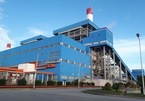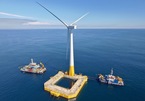 |
|
|
Looking at the petitions and letters sent by many domestic and international organizations to Vietnamese leaders, one can see that the expert has not overstated the issue.
Organizations in favor of wind and solar power, such as the Vietnam Business Forum (VBF) and the Global Wind Energy Council (GWEC), criticized the draft national power development plan 8 when they did not see a significant increase in the proportion of renewable energy in the country’s power development plan from now to 2030.
Particularly, offshore wind power is only 2,000MW, while the GWEC wants to raise this figure to 10,000MW. These organizations also asked Vietnam to completely phase out coal-fired thermal power.
In the document submitted to the Government on the approval of the National Power Development Planning for the period of 2021-2030, with a vision to 2045, the proportion of coal-fired thermal power will significantly fall in the power source system compared to the present level, while renewable energy will stagnate, and gas-fueled thermal power will increase.
According to this plan, the total output of coal-fired thermal power by 2030 would be 40,899 MW, accounting for 28.4-31.4% of the total electricity output. Meanwhile, gas-fired thermal power will increase strongly, with a capacity of 27,471-32,271 MW, accounting for 21.1-22.4%.
Notably, by 2045, the proportion of coal-fired thermal power will decrease, accounting for only 15.4-19.4% and gas-fueled thermal power (including LNG) will increase, accounting for 23.5-26.9%.
Thus, the draft national power development plan 8 actually aims to sharply reduce the proportion of coal-fired thermal power in the power system. Since it began drafting the national power development plan 8, the Ministry of Industry and Trade has always strictly adhered to the viewpoint of not investing in new coal-fired thermal power projects.
According to the Ministry of Industry and Trade, the proportion of coal-fueled thermal power in Vietnam in 2020 was 30.8% and it will be 28.4-31.4% in 2030 (based on installed capacity), similar to the world average (29%) and that of South Korea (30%) at present, and lower than many countries such as China and Indonesia (49%).
Compared to developed countries, the proportion of coal-fueled thermal power in Vietnam is higher but lower than that of many developing countries. The rate of 30.3% of hydroelectricity and 24.6% of wind and solar power in Vietnam is high compared to the world average and of many other countries, but Vietnam has developed renewable energy only for the last 3-4 years.
Globally, coal-fired thermal power still accounts for the highest proportion with 29%, followed by gas-fueled thermal power 25%, hydropower 19%, wind and solar power 20%, nuclear power 5%, and others 2%.
If accepting a higher electricity price, the Ministry of Industry and Trade could raise the percentage of renewable energy even higher in the national power development plan 8.
Contrary to the opinion of international organizations, an environmental expert says the percentage of renewable energy given in the draft national power development plan 8 is quite high. He expressed concern that Vietnam will be alone in the developing world if the draft is approved because it tries to follow developed countries. According to the expert, under this draft, electricity prices will be higher than the current ones because investing in coal-fueled thermal power requires 100% commercial loans.
In fact, arranging capital for coal-fueled thermal power projects in the coming time will face many challenges when many major financial institutions in the world have said no to coal power. Meanwhile, financing for renewable energy is much cheaper and more abundant. Therefore, it is difficult to choose to further increase coal or gas-fueled thermal power.
Ha Dang Son, Director of the Center for Energy Research and Green Growth, emphasized the world's current trend is to increase the proportion of renewable energy. Wind, solar, and hydrogen power will be the energy sources of the future. But coal-fueled thermal power will still play an important role and the world will not be able to completely eliminate coal-fueled thermal power overnight.
According to Son, in order to switch from using primary energies (coal, oil) to cleaner forms of energy, Vietnam must research and design its own roadmap of transition.
Luong Bang

Money flows to wind power projects but coal-fired power lacks capital
Coal-fired power developers find it increasingly difficult to find capital amid the growing support of renewable energy globally.

Offshore wind power: unpredictable 'waves' as investors wait for decision on tariff
Many offshore wind power investors are holding their breath waiting for the next move of the Ministry of Industry and Trade and the Government.